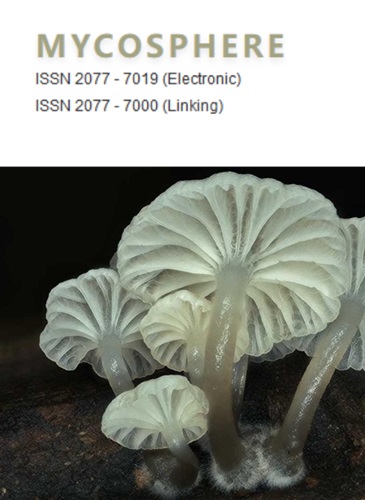应用方法来推断真菌之间的系统发育关系
IF 15.1
1区 生物学
Q1 MYCOLOGY
引用次数: 84
摘要
由于目前的真菌鉴定、分类和系统发育必须应用于DNA分子序列数据,因此有必要记录用于分子系统发育分析的方法。因此,本文的主要目的是为真菌学家进入系统发育研究领域提供一个基本的参考或指导,并避免在相关出版物中不必要的重复。这并不是要详细阐述理论背景,而是打算作为一些有用的软件参考和编码的简明指南,用于真菌学研究中最常用的系统发育方法。这个参考手稿最初是为使用一套必要的程序推断系统发育分析在真菌研究(分类和系统发育)。为此目的,省略了原则、介绍性案文和公式。同时,还包括了从DNA提取到DNA测序、序列质量检查、数据比对和系统发育树重建的一般步骤。本文章由计算机程序翻译,如有差异,请以英文原文为准。
Applied aspects of methods to infer phylogenetic relationships amongst fungi
There is a need to document the methodologies used for molecular phylogenetic analyses since the current fungal identification, classification and phylogeny are necessarily applied with DNA molecular sequence data. Hence this manuscript is mainly aimed to provide a basic reference or guideline for the mycologists venturing into the field of phylogenetic studies and to avoid unnecessary repetitions in related publications. This is not at all to elaborate the theoretical background but is intended as a compact guide of some useful software references and coding for the most commonly used phylogenetic methods applied in mycological research. This reference manuscript is originally conceived for usage with a set of programs necessary for inference of phylogenetic analyses in fungal research (taxonomy and phylogeny). For this purpose, principles, introductory texts and formulas have been omitted. Meanwhile, necessary steps from DNA extraction to DNA sequencing, sequences quality check, data alignment and general steps of phylogenetic tree reconstructions have been included.
求助全文
通过发布文献求助,成功后即可免费获取论文全文。
去求助
来源期刊

Mycosphere
MYCOLOGY-
CiteScore
30.00
自引率
8.20%
发文量
9
审稿时长
4 weeks
期刊介绍:
Mycosphere stands as an international, peer-reviewed journal committed to the rapid dissemination of high-quality papers on fungal biology. Embracing an open-access approach, Mycosphere serves as a dedicated platform for the mycology community, ensuring swift publication of their valuable contributions. All submitted manuscripts undergo a thorough peer-review process before acceptance, with authors retaining copyright.
Key highlights of Mycosphere's publication include:
- Peer-reviewed manuscripts and monographs
- Open access, fostering accessibility and dissemination of knowledge
- Swift turnaround, facilitating timely sharing of research findings
- For information regarding open access charges, refer to the instructions for authors
- Special volumes, offering a platform for thematic collections and focused contributions.
Mycosphere is dedicated to promoting the accessibility and advancement of fungal biology through its inclusive and efficient publishing process.
 求助内容:
求助内容: 应助结果提醒方式:
应助结果提醒方式:


